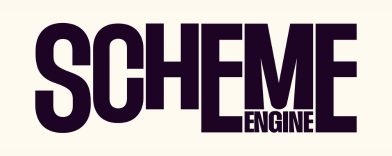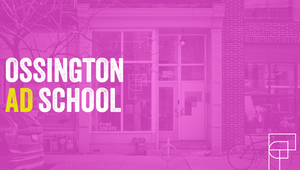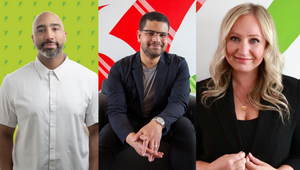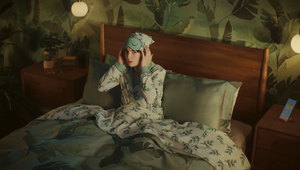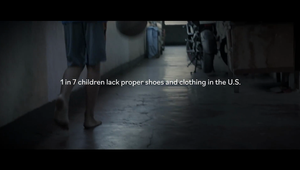
This Creative Agency Built a Legacy Space to Highlight the Importance of Indigenous Reconciliation

It’s true that right now, the people of Canada have a lot on their plates. After all, over the past few months, the country has had its sovereignty questioned, tariffs have come into effect, and now, a new federal election is around the corner, which poses significant implications for everyone, from coast to coast.
However, even throughout all of that, there are still other matters which need to remain front of mind. A great example is Indigenous reconciliation – an ongoing process which everyone must collectively pursue, not because it’s convenient, but because it matters. Put bluntly, the historic treatment of the Indigenous population is an incredibly dark part of Canadian history, yet it’s one that must be acknowledged and learned from – a path which we should all be walking together in pursuit of truth, healing, and a better tomorrow.
While this endeavour can come in many shapes, sizes and forms, a great example of starting on a positive note can be seen with Toronto-based independent FUSE Create. Longtime partners of The Gord Downie & Chanie Wenjack Fund, an organisation designed to aid Canada’s collective reconciliation journey through a combination of awareness, education, and action, the agency took this to the next level earlier this month with the launch of its very own in-office legacy space. Something partners of the fund are encouraged to create, each is designed to celebrate Indigenous culture while simultaneously providing an opportunity for education on this demographic’s history and the need for reconciliation – an important milestone in any business’ journey in this regard.
To learn more about the process, and why something like this was right for FUSE, LBB’s Jordan Won Neufeldt sat down with founding partner Garo Keresteci, as well as The Downie Wenjack Fund president and CEO Sarah Midanik, for a chat.

LBB> Congratulations on the launch of your new legacy space! What does the chance to do this represent to the agency, and how are you feeling right now?
Garo> We feel great about it! FUSE has been partners with The Downie Wenjack Fund for three years, and when we moved into a new location a couple years ago, we were wondering where we would put a legacy space. We looked at all kinds of different rooms, before finally deciding to put it right where everybody comes into the office. You come up our stairs and we have it on three walls, right in the central area. That's really important to us because we want it to be top of mind. Reconciliation is one of those things where sometimes it hits the newspaper, people talk about it, but then it dies away. However, we believe people should think about it on a regular basis, and putting this installation in our space as prominently as we have serves as a way of reinforcing this.
Additionally, part of our sponsorship deal with Downie Wenjack is us providing them space; we're the organisation’s Toronto office. So, not only does this moment mean a lot to our company, but we get to share this beautiful space as well. We’re really, really happy it’s there.
LBB> Let’s talk a little more about the relationship between FUSE and Downie Wenjack. How did you first start working together, and why is this a good fit for both sides?
Garo> I've actually been close with the Downie family for a long while. Our kids all grew up together, and Gord Downie’s older brother, Mike, is a really good family friend. So, I was always engaged with them, and then Gord's plea to the prime minister to do something at the last Tragically Hip show before his passing is really what started the charity. He found out about Chanie Wenjack, told his story, and that's what led to this whole thing.
With that said, while I've been engaged for a while, I couldn't force this decision on the agency. Rather, the more our people learnt about the charity, the more they wanted to do something. It really worked out well. This legacy space is a real milestone for us on our reconciliation journey.
LBB> Please tell us more about legacy spaces! Why are they the right way to celebrate Indigenous culture while simultaneously educating on reconciliation, and what makes creating a legacy space so important for partners of the Fund?
Sarah> Legacy spaces give corporations, educational institutions and other organisations a chance to play an important role by providing safe spaces to learn about Indigenous history and reconciliation. Each serves as a physical Indigenous space-making place, and a reminder of the important work that each of us needs to undertake in responding to the Truth and Reconciliation Commission’s 94 calls to action.
I always make the joke that if you've seen one legacy space… you've seen one legacy space, because every single partner has a different starting point and a different journey based on where they’re at internally, what kind of sector they're in, etc. In short, they’re forward-facing places where guests, partners and employees can interact and learn from the space itself.

LBB> Building on this, what does it take to actually create one, and what was this process like for FUSE?
Sarah> A lot of the role that Downie Wenjack plays in the legacy space programme is just creating a safe space to ask questions, engage with Indigenous partners internally and externally, and to help facilitate those conversations about what might make sense for each organisation and community. After all, legacy spaces are a tangible way to ensure that unique cultures, rights, interests, perspectives and contributions of Indigenous peoples are represented and celebrated.
So, really, the final product differs between each unique space, but the one thing that remains the same is that each provides ongoing education opportunities, encourages meaningful conversations, and aims to foster a deeper understanding of Indigenous perspectives.
Garo> Even after we decided where to put it, we still had to figure out what we wanted to display. It was then that we happened across the work of artist Blake Angeconeb. He had done a commissioned project at Union Station, and there was an element that was an image of Chanie, and also of the residential schools. It was a beautiful piece, and so we brought him in for our office. Incidentally, his wife, Danielle Morrison, is a poet, and she also wrote a poem called ‘Chanie’ which appears in our space.
All in all, we've now got one wall with the plaque that designates a legacy space, another which holds the story of Gord Downie, Chanie Wenjack and how their lives intersected, and then the third is all educational materials. Incidentally, we already had existing shelves there, but it wasn't a space we were using efficiently, so now it's purple and all the literature on the shelves pertains to reconciliation.

LBB> How has the implementation of this changed your workspace? Do you find that you’re more cognisant of the significance of these issues, now that it’s in place?
Garo> For sure! On the surface level, the team at FUSE has absolutely become more cognisant of reconciliation and what Downie Wenjack is about, but the legacy space also does two things beyond that. The first, of course, is that it reminds people on a daily basis about reconciliation. When you're in our office, you have to pass by the existing space. You can't come in and not see it, and the impact of that cannot be downplayed.
However, in the long-term, it also shows we are consistent with our values. At FUSE, we talk about transparency, we talk about being good corporate citizens, we talk about not shying away from bad news, and that's really what reconciliation is. So it reinforces the idea that we're still dealing with this stuff, and all have a ways to go on this journey.
LBB> Of course, you also had an exciting reveal ceremony to showcase the space! How did the event go, and do you have any anecdotes from the experience?
Garo> It was so, so beautiful. We invited chief Claire Sault of the Mississaugas of the Credit First Nation – the territory we reside in – to join us, and she offered some insightful remarks about engaging in reconciliation. Anecdotally, ahead of the ceremony, I had the chance to talk with her about the fact that with reconciliation, people are sometimes paralysed by the size of the undertaking. They're like, 'What should I do? I don't want to do the wrong thing!'. You know what her response was? “Just do something,” which goes back to Gord's words and where this all started in August of 2016. So, in some ways, that conversation really felt like both a full-circle moment, and the start of a new phase of the journey.
We also had an elder come in, Gary Sault, and he did a smudging ceremony. I've done a few in the past, but sharing that moment with the entire FUSE leadership team – I think was really impactful for them to hear him sing and witness that. And then Mike Downie spoke, Sarah spoke – it was all really touching. I think it was especially emotional for me because I've been involved for so long, and it really felt like the crossover of two important worlds in my life. But also, the feedback I've gotten from our leadership team indicates that they were also really taken by the experience. The whole thing was an act of reconciliation, and I'm really proud that we had an opportunity to do it.
Sarah> We were also privileged to have Blake and Danielle come speak to us about the art. To hear about the emotion, intention and thought behind the work, as well as Blake's dream of Gord and brightening up the colours so that it had a different feel to it – you don't get those intimate, powerful stories when the artists can't join. So to me, that made the night very special.
Aside from that, to echo Garo, it was a really nice, intimate event. It's been many years of us working together, so to finally see our partnership formalised in this way and have FUSE officially come on as a legacy space partner was really special.

LBB> With everything in mind, what has this whole experience taught FUSE? And what should more Canadians know about the subject of reconciliation as a whole?
Garo> For us, it certainly reinforced our existing values around being a good member of the community. Canada is a beautiful and amazing place – everything I've gotten personally and professionally has come because I live here – but we also have to accept it’s not perfect. This country has had its challenges in the past. So, learning about our history and doing something about it is consistent with our ethos, and I’m really proud of that.
But also, with what's going on around DEI and the idea that it's now a bad word, this experience served as affirmation that while some companies are going the other way, we don't have to do that. FUSE is a private company. This is what we stand for, and I dare say a big, publicly-traded, multinational agency probably wouldn’t be allowed to do something like this because of all the red tape. I think that’s a real shame.
Sarah> To answer the second question, I think what's really important is to make the distinction between DEI initiatives and reconciliation; they are not the same. As with most social movements, these things take time. It's not going to happen overnight, and there's no one destination that we're trying to reach. It's an ongoing commitment, and that dedication to improving the lives of Indigenous people is vital. It's about making sure that we take that reconciliation lens with us when we do things like make policy, vote, and look at things like housing and the social determinants of health when it comes to Indigenous peoples. In this way, we can continue to deepen our understanding while building those bridges so that we can create a safer, more equitable Canada that we can all be proud to be a part of.
LBB> Finally, for businesses considering getting involved in something like this, what should they know?
Sarah> First of all, don't be afraid or intimidated. The entire point of the programme is to help. There really is an entry point for everyone, and one of the things we've seen consistently is how it can be leveraged effectively to not just increase employee engagement, but external engagement with community and partners as well. It's also a really amazing opportunity to look at the history of a company or the organisation, supply chains, hiring policies and practices – it's sort of that catalyst to get things started, and to further reconciliation.
Also, if you don't know what your role is, should be, or could be, with regards to reconciliation, or you don't think you have a role to play, I would challenge you on that. Every single one of us in this country should be caring about reconciliation. Whether it's Indigenous young people being the fastest growing population in Canada, land claims, Indigenous rights, this is not something that's going to pass. It’s an essential part of our history. So, if you don't know how to situate yourself, or if you haven't started your learning journey, don't be afraid to reach out and engage. Downie Wenjack is a great place to start. There's space for everyone to join us on this path toward reconciliation, and we can help create those connections and bridges for you.






